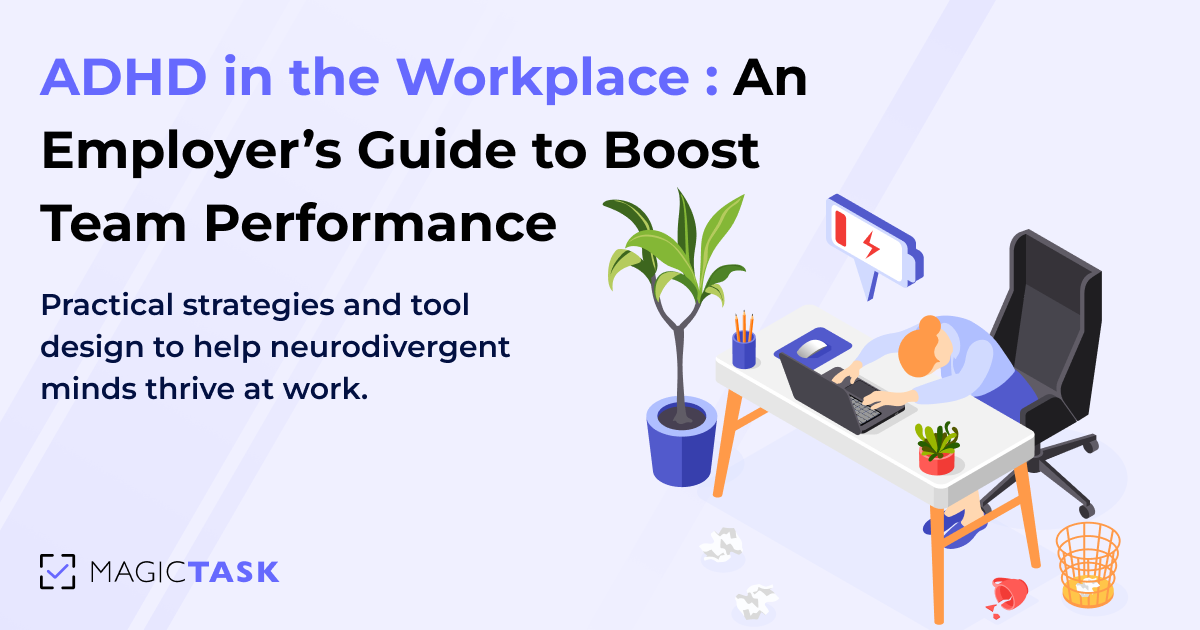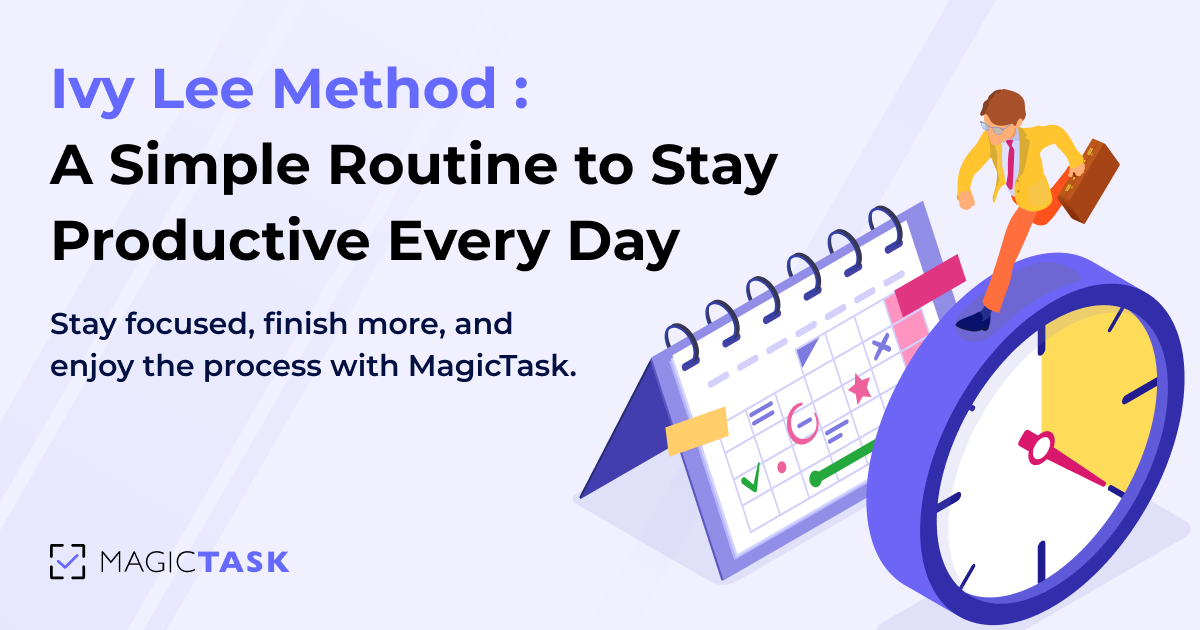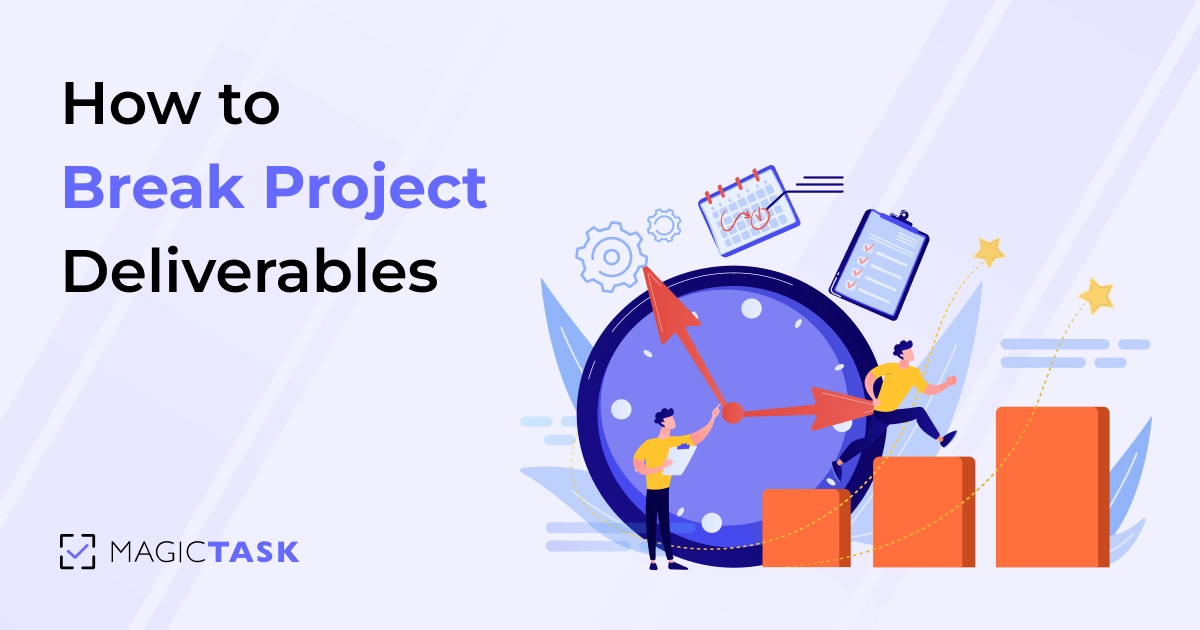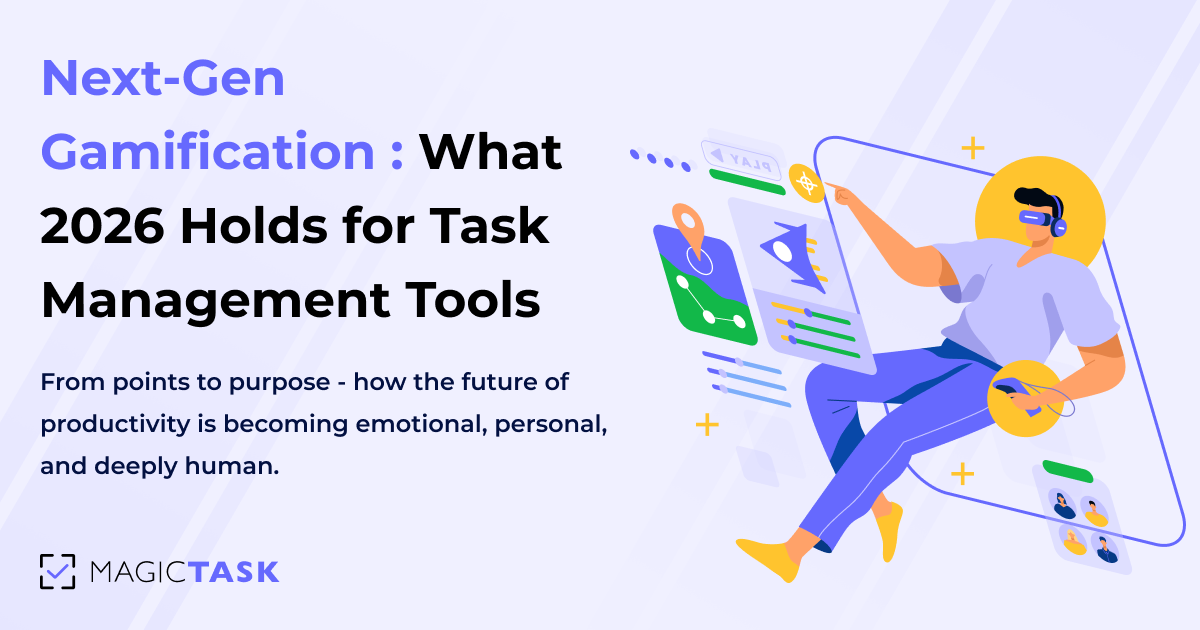Building a Gamified Work Culture Where Teams Thrive

Did you know that some of the most successful teams actually treat work like a game? I know that sounds odd, but research backs it up.
A study published in the International Journal of Environmental Research and Public Health found that gamified approaches, things like friendly challenges, clear goals, and instant feedback, can make teams more engaged, creative, and effective.
And it makes sense, doesn’t it? When you approach work the way a gamer approaches a new level, with focus, curiosity, and a bit of competitive fun, even the toughest projects start to feel more like a quest than a chore.
In this post, we’ll explore how building a gamified work culture can turn everyday tasks into opportunities for growth, collaboration, and genuine excitement.
How Work Culture Shapes Team Productivity
Free snacks and ping pong get your team into the door but they’re not motivation enough. The real test of culture shows up on a Monday morning. How your team approaches the first task of the week. How they follow through on goals when energy dips. How they respond when deadlines shift. That’s what defines culture.
And it’s doing one of two things: helping your team thrive or quietly holding them back.
Lasting change doesn’t come from another pep talk or offsite. It comes from reshaping the environment people work in every single day.
Positive vs Negative Work Culture
Every workplace has a culture, whether it’s intentionally shaped or left to form on its own. How do people communicate under pressure? Who steps up when a project hits a snag? How does your team handle unexpected challenges? Culture shows up in how work gets done and how people respond when things go wrong.
A positive culture keeps teams aligned, engaged, and accountable. People know what’s expected, they support each other, and they’re motivated to show up and do their best.
As Mike Tyson famously said, “A happy fighter is a dangerous fighter.”
The principle applies to teams too. When employees feel supported, recognized, and connected to their work, they tackle challenges with energy, perform at a higher level, and consistently deliver results. Productivity flows naturally because the environment encourages progress, collaboration, and excellence.
A negative culture, on the other hand, creates friction. Tasks get delayed, communication breaks down, and teams work in silos. Even high performers start burning out when they feel disconnected or unsupported.
In fast-moving teams, culture is about the systems and tools that shape daily behavior. Are your workflows making it easy to do the right thing? Does your digital workspace guide focus instead of creating friction? Choosing the right tools reinforces good habits and helps teams operate at their best.
The Environment Principle
A team’s productivity is shaped by the environment they work in. As Atomic Habits explains, behavior follows design. When the environment makes good habits easy, teams perform better naturally.
Today, the digital workspace is the environment. The tools your team uses every day either support focus or create friction. A cluttered workspace or bloated dashboard can derail even the most motivated employees.
Here’s how environment shapes behavior in modern teams:
- Friction creates fatigue. When tools are complex or unintuitive, people resist using them. Productivity slows down.
- Design directs behavior. Clean, visual systems guide attention to what matters most.
- Clarity builds consistency. When the digital workspace reflects clear priorities, teams follow through effortlessly.
- Gamified environments sustain momentum. Small wins, like completing tasks and seeing progress, keep motivation alive day after day.
A well-designed workspace doesn’t need constant management; it guides people automatically. That’s why platforms like MagicTask focus on simplicity and positive reinforcement because the right environment inspires progress.
The Benefits of Gamified Work Culture
Traditional management tactics rely on pep talks, performance reviews, or team-building exercises that temporarily boost morale. But sustained engagement comes from systems that make progress visible and rewarding. That’s where gamified work culture steps in.
1. Engagement Through Rewards
Progress is one of the strongest motivators in human behavior. When people can see their effort translate into visible, meaningful outcomes, they stay engaged longer and perform better. Gamification builds on this principle by turning everyday work into a rewarding experience filled with feedback, recognition, and visible progress.
Companies using gamification techniques have seen about a 48% increase in employee engagement, which shows that they have a measurable impact.
Instead of checking off endless tasks, employees experience work as a dynamic cycle of achievement. Each completed task contributes to something tangible, a sense of progress that feels immediate and satisfying.
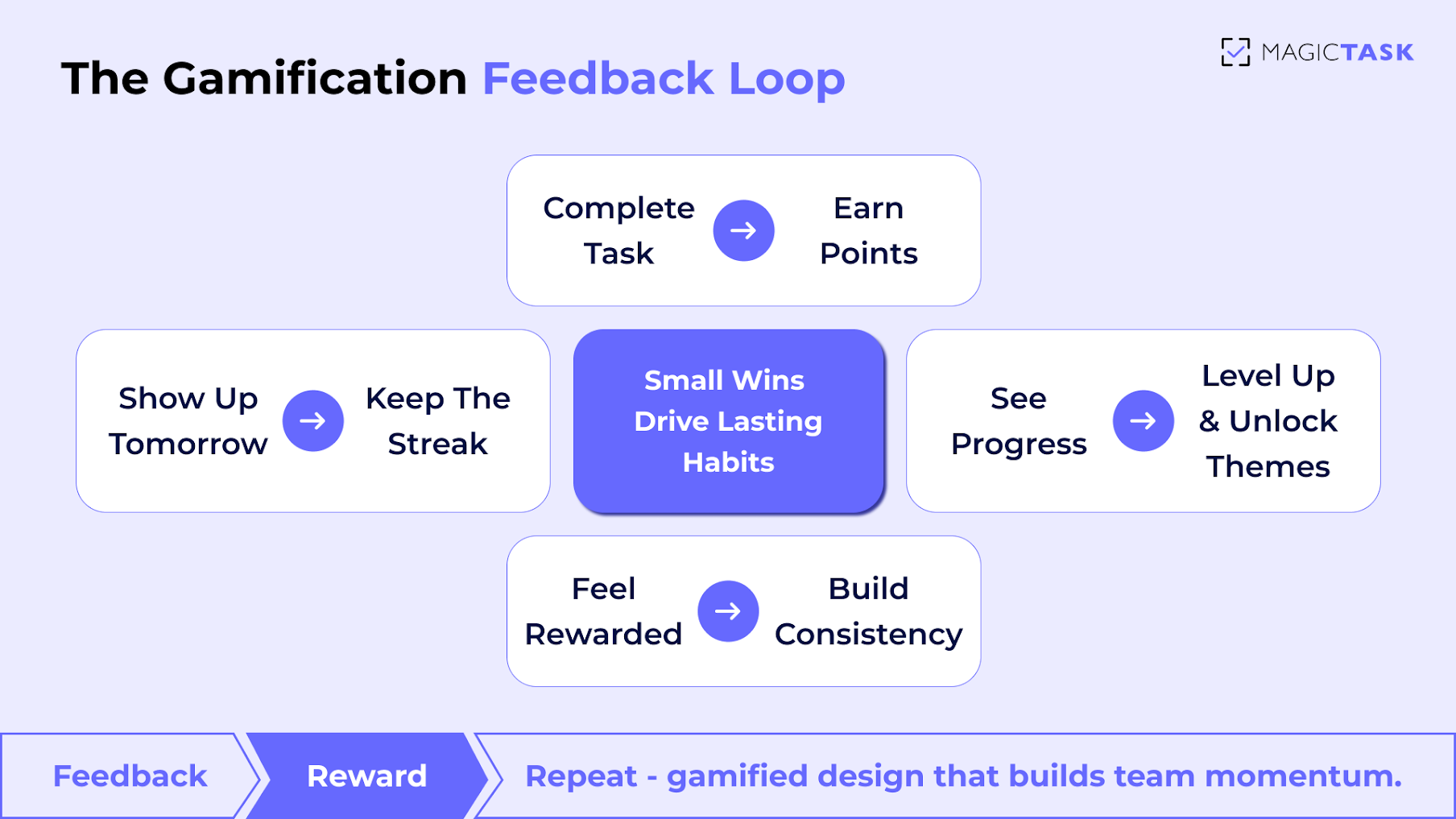
Here’s how gamified rewards keep teams engaged:
- Visible progress loops: Points, levels, and progress bars show advancement instantly.
- Micro-rewards for effort: Small wins after each task keep motivation consistent.
- Completion satisfaction: Tasks feel rewarding, not routine.
- Team recognition: Collective progress builds a sense of shared success.
Over time, these feedback loops turn daily work into something employees actually look forward to. Each finished task delivers a small win — a reminder that effort matters and progress is always visible.
2. Accountability and Visibility
When progress is visible, accountability becomes effortless. Teams stay aligned because everyone can see what’s being done, who’s contributing, and how their work connects to the bigger picture. Transparency turns into motivation — not through micromanagement, but through shared awareness.
Gamified systems enhance that visibility by giving every task a measurable outcome. Points, levels, and streaks show effort in real time, turning invisible progress into something tangible. People naturally rise to the occasion when their work is seen and valued.
Here’s how gamified visibility drives accountability across teams:
- Clear contribution tracking: Everyone knows who’s moving projects forward.
- Peer motivation: Visible progress fosters healthy competition and collaboration.
- Reduced management load: Leaders spend less time chasing updates and more time supporting.
- Shared responsibility: Teams align around collective goals instead of siloed efforts.
This kind of open, game-like transparency replaces the anxiety of constant check-ins with the satisfaction of mutual progress. Accountability becomes part of the game.
3. Consistency Over Motivation
Motivation is fleeting. It spikes during launches, deadlines, or team events, then fades. What truly sustains performance is consistency: the quiet rhythm of progress that builds over time. Gamified systems nurture that rhythm by rewarding small, repeated actions instead of waiting for big wins.
When employees earn points or see visual progress for each completed task, they get continuous reinforcement. The focus shifts from “feeling motivated” to simply showing up and taking the next step. That’s how habits form — through repetition rewarded in real time.
Here’s how gamification turns consistency into a natural part of the workflow:
- Daily feedback loops: Each task completed provides an instant sense of accomplishment.
- Incremental rewards: Progress is built one step at a time, keeping momentum steady.
- Visible streaks and milestones: Teams stay engaged through ongoing recognition.
- Low-pressure accountability: No guilt for missing a beat — just encouragement to start again.
Over time, this rhythm of steady progress compounds into real results. Instead of waiting for bursts of motivation, teams develop habits that make productivity second nature.
4. Collaboration and Identity
A strong work culture is about how teams come together. Gamified systems create a shared sense of purpose and identity, where everyone knows their role and contribution matters. When progress is visible and rewards are tied to team goals, collaboration naturally increases.
Gamification fosters a collective mindset. Teams rally around challenges, celebrate wins together, and develop an identity rooted in accomplishment. This shared experience strengthens cohesion and encourages members to support each other, creating a workplace where collaboration isn’t optional — it’s built into the system.
Here’s how gamification reinforces collaboration and identity:
- Shared goals: Teams see how individual tasks contribute to larger objectives.
- Collective recognition: Successes are celebrated as a group, not just individually.
- Healthy competition: Leaderboards and progress tracking spark engagement without undermining teamwork.
- Team identity: Gamified achievements cultivate pride in being part of a high-performing, results-driven team.
By turning work into a shared game, employees feel connected, accountable, and proud of the team they belong to, transforming culture into a driving force for productivity.
Building a Gamified Work Culture with MagicTask
MagicTask turns gamified work culture from concept into practice. At MagicTask, we’ve completed 70,000+ tasks, showing how gamification drives real progress and engagement. Points, levels, and progress loops make work visible, rewarding, and motivating.
Teams stay aligned, celebrate small wins, and maintain momentum, transforming the digital workspace into an environment that naturally guides productivity and collaboration.
Points and Task Sizes
MagicTask rewards progress with a clear, points-based system that reflects the effort behind each task. Assigning sizes to tasks—Small, Medium, Large, or XL—gives employees a visual cue of complexity while making contributions measurable.
Completing tasks earns points, giving teams and leaders a clear sense of effort versus reward. This approach encourages focus, prioritization, and steady progress.
| Task Size | Description | Time Required | Points |
|---|---|---|---|
| S | Quick, low-effort task | <15 min | 10 |
| M | Moderate effort | 15–30 min | 25 |
| L | High-effort task | 1–2 hours | 50 |
| XL | Complex, multi-step project | More than 2 hours | 100 |
By visually framing tasks and tying them to points, MagicTask makes productivity tangible and motivating, turning everyday work into achievable milestones.
Level-Up Themes and Motivation Loops
MagicTask turns progress into a dynamic, engaging experience. As tasks are completed, users unlock animations, sound effects, and new visual themes, creating a sense of advancement beyond simple checkmarks. These small, interactive rewards keep morale high and inject energy into daily workflows.
By linking task completion to visible, enjoyable feedback, MagicTask prevents tool fatigue and maintains engagement over time. Motivation becomes self-reinforcing: the more users accomplish, the more the environment celebrates their progress, encouraging consistent focus and momentum.
Shared Boards and Rankings
Transparency drives accountability, and MagicTask makes it effortless. Shared boards give teams a clear view of who’s working on what, while rankings and progress indicators highlight contributions in real time. This visibility encourages collaboration and healthy competition without micromanagement.
Key benefits of shared boards and rankings include:
- Team-wide clarity: Everyone sees tasks, priorities, and progress at a glance.
- Healthy competition: Leaderboards motivate individuals while reinforcing team goals.
- Balanced workload: Managers can quickly identify bottlenecks or uneven distribution.
- Enhanced collaboration: Visibility encourages peer support and knowledge sharing.
By combining transparency with gamified recognition, MagicTask helps teams stay aligned, engaged, and motivated to deliver results together.
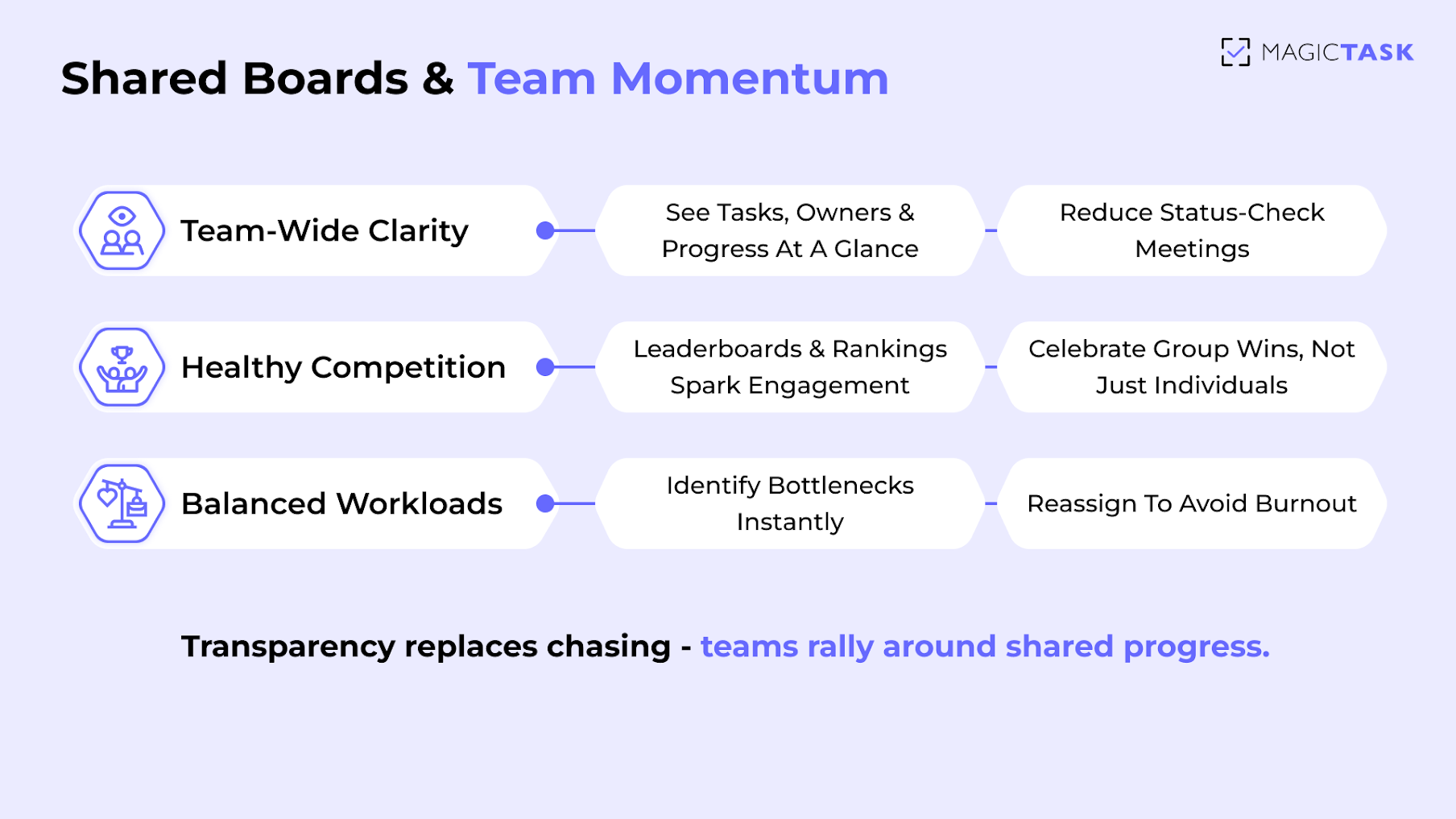
Simple, Distraction-Free UI
MagicTask keeps the focus where it belongs: on tasks, priorities, and progress. The clean, uncluttered interface removes the noise and complexity found in many traditional tools, so teams can work efficiently without feeling overwhelmed.
By stripping away unnecessary dashboards, menus, and notifications, MagicTask turns task management into an intuitive, enjoyable experience. When tools are easy to use and visually clear, teams engage naturally, complete work faster, and maintain momentum without the frustration of navigating bloated software.
Conclusion
A thriving work culture doesn’t rely on motivation alone. It relies on systems that make progress visible, rewarding, and effortless. Gamification turns everyday tasks into achievable milestones, promotes accountability, and reinforces collaboration, creating an environment where teams naturally perform at their best.
MagicTask brings these principles to life. Points, levels, shared boards, and a distraction-free interface transform the digital workspace into a platform that sustains engagement, builds consistency, and celebrates progress. Teams don’t just complete tasks—they thrive, innovate, and enjoy the process along the way.
Similar Blogs
FAQS?Have questions? Look here
A gamified work culture applies game-like elements—such as points, levels, and rewards—to everyday tasks. This approach makes work more engaging, boosts motivation, and helps teams stay focused and productive.
Gamification drives productivity by turning progress into visible, rewarding milestones. When employees see their achievements and contributions in real time, they feel motivated to maintain consistency and accountability.
A gamified workplace increases engagement, collaboration, and performance. It creates clarity, fosters healthy competition, and transforms routine work into an enjoyable, goal-driven experience.
By making progress visible through shared boards, rankings, and point systems, gamification encourages transparency and shared ownership. Teams naturally stay aligned without constant check-ins or micromanagement.
The environment shapes behavior. A clean, intuitive digital workspace makes it easier for teams to focus, collaborate, and stay consistent—especially when supported by gamified systems that reward progress.
MagicTask turns gamification into practice with task sizes, points, levels, and shared boards. It helps teams track progress, celebrate small wins, and stay motivated through a distraction-free, rewarding workflow.
Yes. Unlike short bursts of motivation, gamification builds lasting engagement by rewarding consistent actions. Small wins and progress loops keep momentum alive, helping teams thrive over time.
